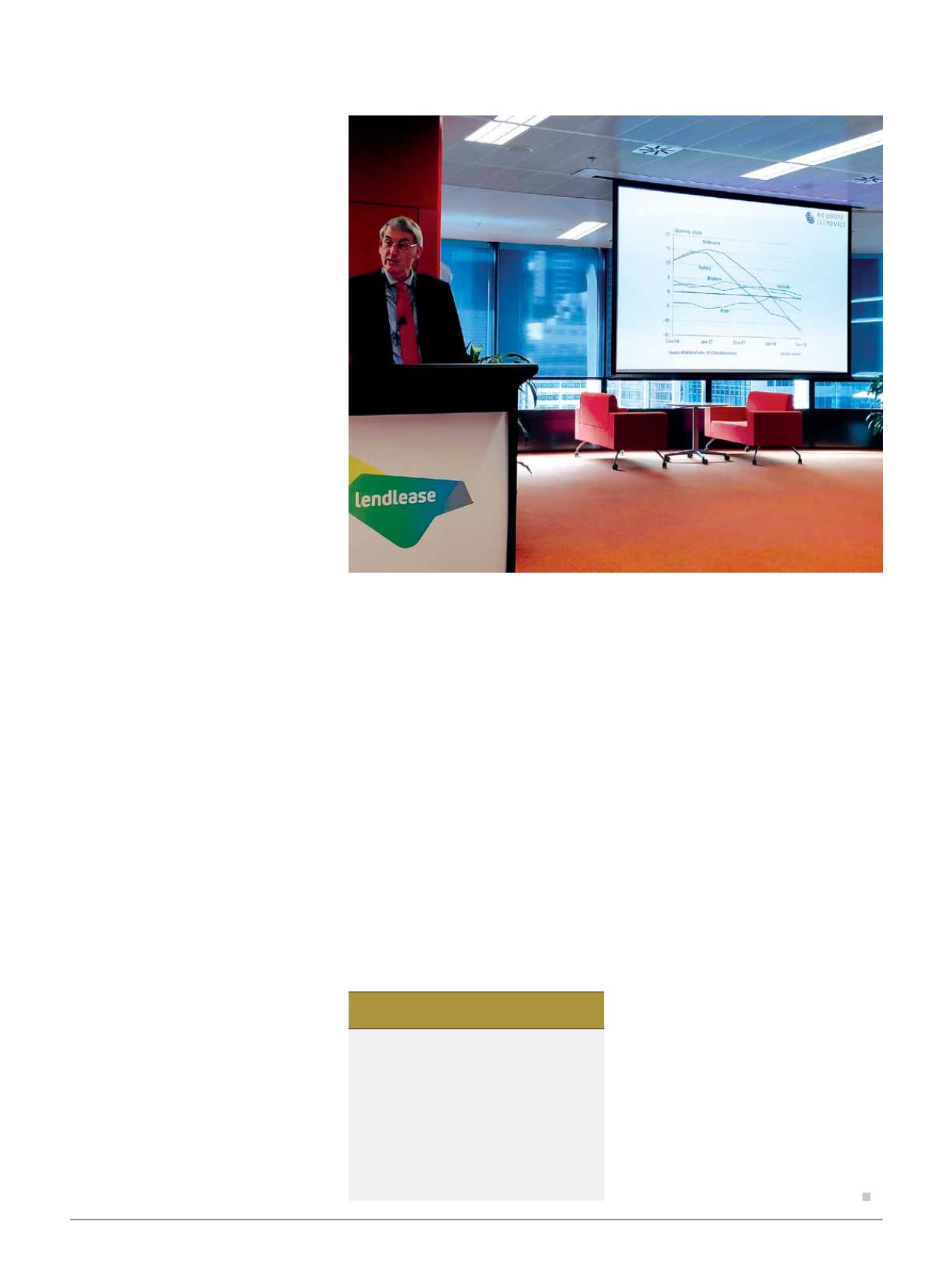
 www.buildingconnection.com.au
www.buildingconnection.com.au
2 1
to speed with the rapid advancements
of the aforementioned technologies.
While day one set the scene regarding
technology and its place in the
construction industry, day two required
a need to look beyond technology and
consider changing business models,
social, economical and political forces,
as well as environmental concerns.
By combining the two it provided a
platform for delegates to develop
effective strategic thinking, action and
leadership.
Economist Robert Mellor provided
insight into global industry trends as
well as a focus on those closer to home.
Some of his key points included:
∫ Leading residential building indicators
are now broadly in retreat for most
major markets.
∫ While the peak of the cycle was
2015/16 at 233,900 dwellings,
activity remained close to this
elevated trough to 2017/18.
∫ Approvals were down 17% for
total dwellings over the first half
of 2018/19. The decline was
predominantly in attached dwellings
(-29%), with houses (-5%) having only
a modest decline.
∫ It is now expected that 2018/19
national commencements will come
in at 190,000.
∫ Dwelling commencements are
forecast to trough in 2019/20 at
161,000. This would represent a
peak-to-trough decline of 31%.
∫ The decline is focused in two boom
states of NSW and VIC.
∫ Continued elevated population
growth, low interest rates and a
decent labour market are sustaining
housing demand and preventing a
bigger decline.
Other sessions included a look at how
the NCC works in practice and how it is
evolving along with Standards to meet
rapidly changing industry conditions.
Australian Building Codes Board CEO
Neil Savery outlined some of the key
challenges, including the fact that The
NCC going forward, and indeed building
regulatory systems in general, need to
have regard to that fact that buildings
and their operating systems are far
more complex than when the current
systems were devised.
“ We need to consider everything
form a holistic perspective, understand
the scale and pace of change and
acknowledge that in order to be
competitive, industry is looking to
minimise costs while dealing with
buildings and products that present
greater risks,” says Neil.
Former Supply Chain Sustainability
School CEO Robin Mellon introduced
the audience to a ‘new’ way of thinking,
without trying to stuff ‘sustainability’
down anyone’s throat.
His thought provoking session provided
ideas for alternative procurement
strategies while exploring the idea that
‘whole of building/precinct – whole of
life’ is what matters, rather than the
attributes of individual elements.
Robin encouraged delegates to
consider the three following priorities:
∫ Sustainable procurement
∫ Modern slavery (if you haven’t already,
read the Government white paper
titled Hidden in plain sight)
∫ Materials and how we can choose
better
The event was wrapped up by a panel
session discussing how manufacturers
can go about getting products specified
in a digital world. It showcased real-
world examples of products that
have been successfully digitised for
use across multiple BIM platforms,
the technology used and emerging
technologies such as those explored on
day one.
This thought provoking summit
provided plenty of food for thought
while opening the industry’s eyes to the
role disruptive technologies are playing
in the construction industry today and
the boundless possibilities of the future.
The question is, will you be ready?
Economist Robert Mellor shared insight into industry trends, including statistics on
expected dwelling commencements and how it will affect the economy.
EMERGING TECHNOLOGIES TO FEAST YOUR
EYES ON
The opening day of the summit presented
users with an insight into some disruptive
technologies that are nothing short of
revolutionary. When you’ve got a few moments
to spare and feel like being inspired, punch the
following keywords into Google:
∫
Google Crabot
∫
Alibaba City Brain
∫
Airobotics drone
∫
Astro live experiences
∫
AP Works by Airbus
















